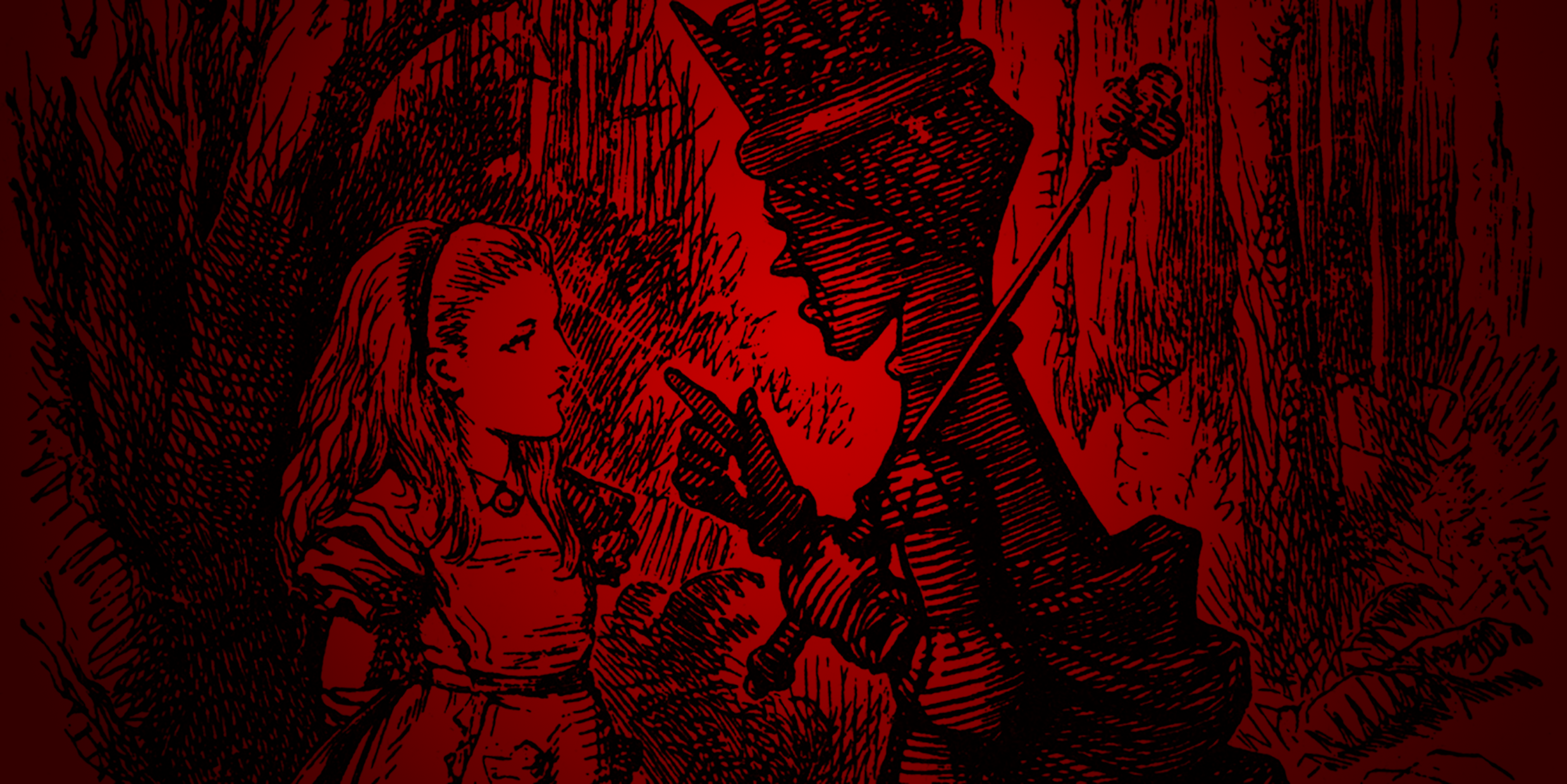Originally published 9 June 1986
“One can’t believe impossible things,” says Alice in Through the Looking-Glass.
“I daresay you haven’t had much practice,” the Red Queen replies. “When I was your age I did it for a half-an-hour a day. Why, sometimes I’ve believed as many as six impossible things before breakfast.”
It’s always good to have some practice believing impossible things. So if you are reading this while the coffee is brewing try thinking about “cosmic strings.”
Imagine a string that reaches all the way across the universe, wending its way between the galaxies. The string is infinitely long. It is thin, a billion billion times thinner than the nucleus of an atom, so thin that it is completely invisible to the eye. The string is massive: On Earth an inch of the stuff would weigh ten quadrillion tons. And the string is exceedingly taut: A violin string with the same mass density and tension would vibrate at a frequency 20 octaves above middle‑C.
Impossible? Some theoretical physicists (including Alex Vilenkin of Tufts University) maintain that this sort of cosmic string may exist, and that it was created in the first moments of the universe.
From the beginning
Most scientists believe that the universe began about 15 billion years ago with the explosion of an infinitely dense and infinitely hot seed of energy, the so-called Big Bang. As the seed began to expand and cool, space, time, and matter came into existence.
Certain fashionable theories of particle physics suggest that “space” is very different than “nothing,” and that it can exist in different energy states. In the first fractions of a second of the Big Bang, as the universe cooled very fast, one-dimensional defects in the energy structure of space may have come into being, like extra threads in a piece of woven cloth. These defects were a network of lines of highly concentrated energy, called cosmic strings. As the universe continued to expand, the network evolved into a thin web of infinitely long strings, and a larger number of closed loops.
Astronomers have long puzzled over what caused the original matter of universe to be collected into the galaxies and clusters of galaxies that we now see in the sky. Cosmic string may be the answer. In the theory of relativity, energy and mass are equivalent. The equivalent mass of cosmic strings would have gravitationally disrupted the smooth distribution of matter in the early universe. Closed loops of cosmic string have exactly the gravitational properties that would have caused matter to fall into the clumps we see today.
Do cosmic strings exist?
So astronomers find cosmic strings theoretically attractive because of the way they help to explain the large-scale structure of the present universe. But do these curious lines and loops of concentrated energy actually exist?
The strings themselves are invisible, but they might be detected by the effect of their gravity. Again according to relativity theory, massive objects warp the structure of space and cause light rays to bend. If a massive object were to lie directly between us and a distant light source, the bending of light would create multiple images of the source. Instead of seeing one light source, we would see two — one to either side of the focusing object.
The ideal light sources to look at are quasars, very bright celestial objects that lie billions of light years away. Double images of quasars have in fact been observed, and usually with galaxies or clusters of galaxies between them. It is presumably the mass of the intervening galaxies that creates the double images. Cosmic string would also form a double image of a quasar. Because of the huge mass density of cosmic string, double quasar images caused by string would be more widely separated than for galaxies — and nothing would be visible in between.
Recently a report of a widely-spaced double quasar image in the constellation Leo raised the exciting possibility that cosmic string may have been detected. That report is now in some doubt. However, a search is underway for the kind of double quasar images — especially several double images all in a line — that might be caused by cosmic string.
So here are six impossible things for you to think about before breakfast: Defects in the fabric of space. Galaxies forming on threadlike loops of concentrated energy. Quasars made double all in a row. Cosmic string extending from one side of the universe to the other. A universe that is a cat’s-cradle of primeval twine.
With a little practice, cosmic string may not seem so impossible after all. Remember, some things that seemed impossible a few years ago — such as black holes and the Big Bang — are now, as the Red Queen might say, “as sensible as a dictionary.”
The hypothetical cosmic strings are still on the leading edge of research by cosmologists and physicists. Observational evidence for cosmic strings has thus far been undetected by astronomers. ‑Ed.



